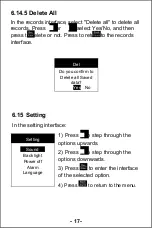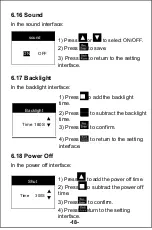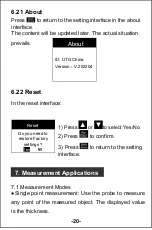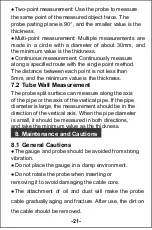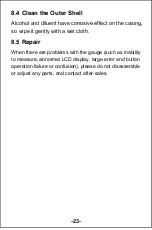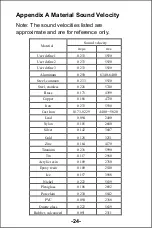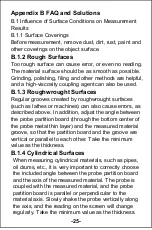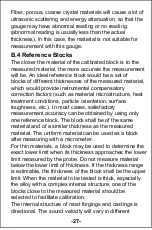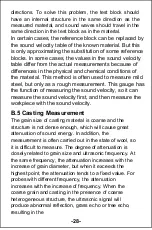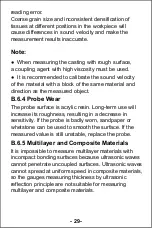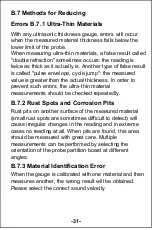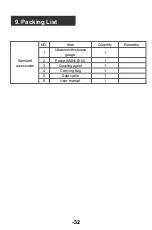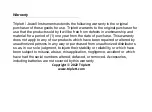
Fiber, porous, coarse crystal materials will cause a lot of
ultrasonic scattering and energy attenuation, so that the
gauge may have abnormal reading or no reading
(abnormal reading is usually less than the actual
thickness). In this case, the material is not suitable for
measurement with this gauge.
B.4 Reference Blocks
The closer the material of the calibrated block is to the
measured material, the more accurate the measurement
will be. An ideal reference block would be a set of
blocks of different thicknesses of the measured material,
which would provide instrumental compensatory
correction factors (such as material microstructure, heat
treatment conditions, particle orientation, surface
roughness, etc.). In most cases, satisfactory
measurement accuracy can be obtained by using only
one reference block. The block shall be of the same
material and of a similar thickness as the measured
material. The uniform material can be used as a block
after measuring with a micrometer.
For thin materials, a block may be used to determine the
exact lower limit when its thickness approaches the lower
limit measured by the probe. Do not measure material
below the lower limit of thickness. If the thickness range
is estimable, the thickness of the block shall be the upper
limit. When the material to be tested is thick, especially
the alloy with a complex internal structure, one of the
blocks close to the measured material should be
selected to facilitate calibration.
The internal structure of most forgings and castings is
directional. The sound velocity will vary in different
-27-





